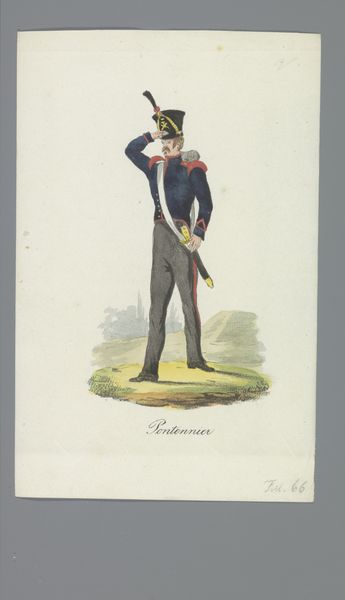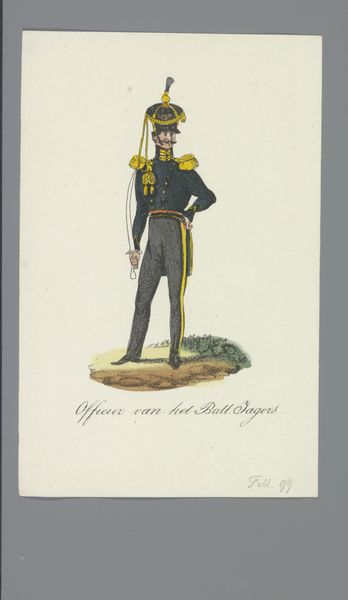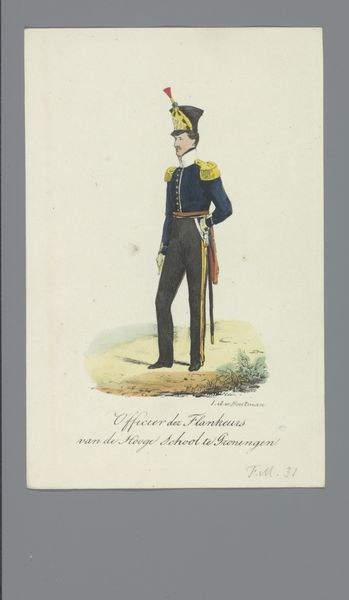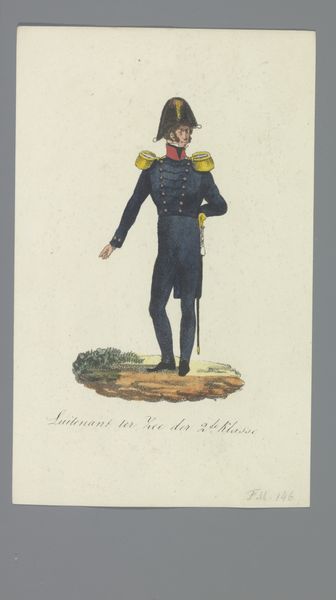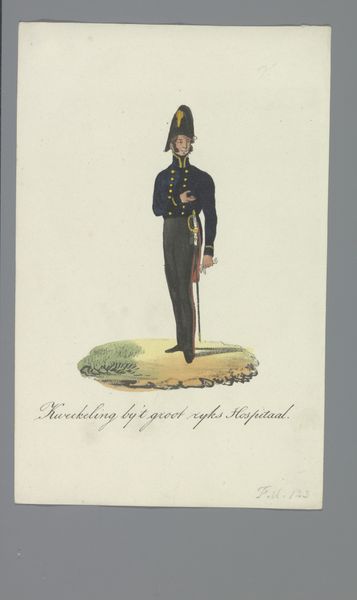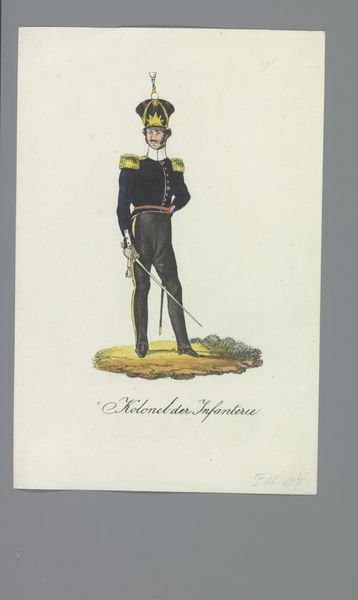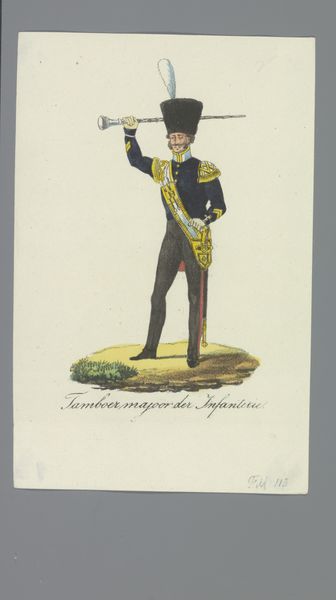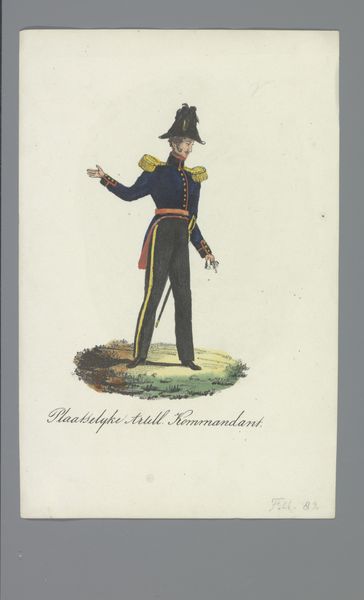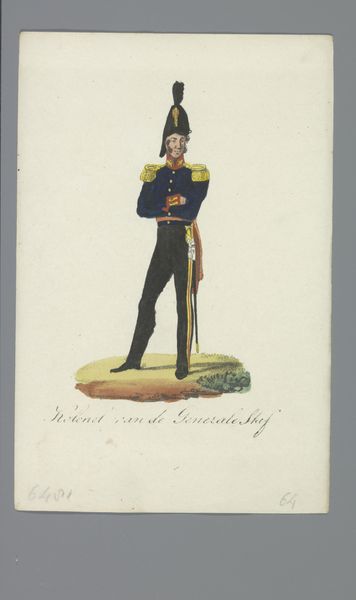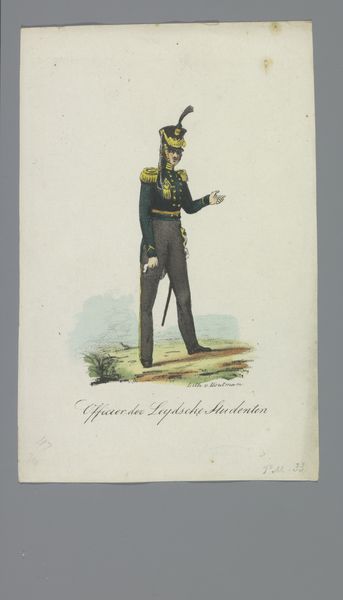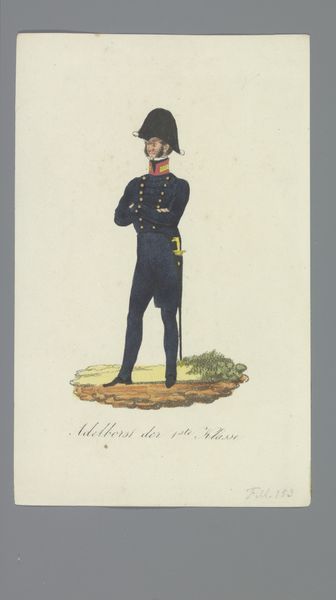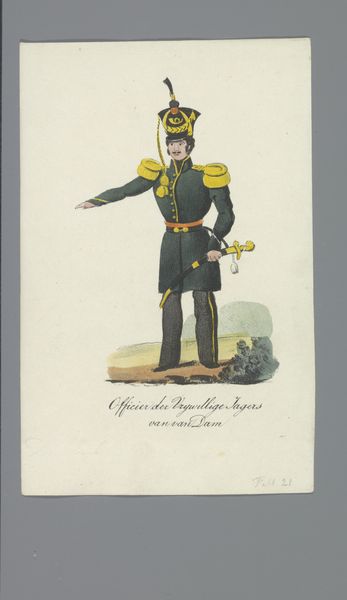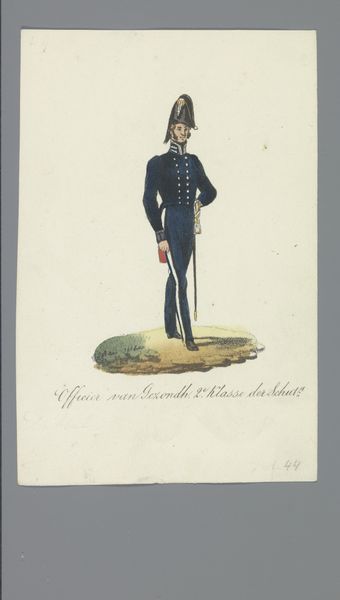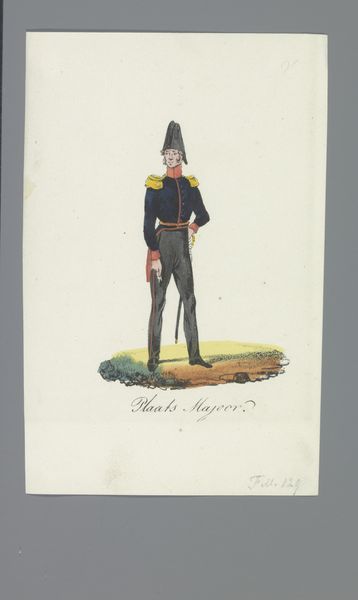
painting, watercolor
#
portrait
#
painting
#
figuration
#
watercolor
#
romanticism
#
costume
#
genre-painting
#
history-painting
#
academic-art
#
miniature
#
realism
Dimensions: height 170 mm, width 110 mm
Copyright: Rijks Museum: Open Domain
Editor: This is "Trompetter, Veld Artillerie" from somewhere between 1835 and 1850, a watercolor by Albertus Verhoesen. There is something very formal, very posed, about the figure... a soldier. How would you interpret this work? Curator: I see this image as more than just a portrait; it's a carefully constructed representation of power and social hierarchy during a period of intense nationalism. Notice the soldier's upright posture and precise uniform. How do these details speak to broader themes of military authority and the individual's role within a structured system? Editor: He certainly looks proud and imposing. Do you think the artist was trying to glorify the military? Curator: That’s an interesting question. On the surface, it appears to celebrate military service. However, consider the broader historical context. The 19th century witnessed rising social inequalities, often fueled by the very structures of power this image seems to uphold. Could this portrait also, perhaps unintentionally, reveal the rigid expectations placed upon individuals within such systems? Where does individual expression fit within the uniform? Editor: That makes me think about how the individual identities might be repressed by military culture...almost dehumanized. Curator: Exactly. Think about Michel Foucault’s ideas on discipline and power. How might this image, created during a period of emerging modern statehood, reflect evolving notions of citizenship, obligation, and control? Editor: I hadn't thought about it in those terms. It's much more complex than just a portrait of a soldier. Curator: Indeed. By examining its historical and social context, we see the artwork functions on multiple levels, inviting a more nuanced understanding of the period's complex dynamics between individual identity and collective social structures. Editor: I appreciate how you connected it to sociological theories. It gave me so much more to think about.
Comments
No comments
Be the first to comment and join the conversation on the ultimate creative platform.
